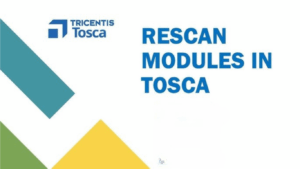Role of Acceptance Testing is thought of as the last inspection before the product is released. And once the software determines the deployment course, the STLC is actually completed. However, acceptance testing is a key component of the improvement plan in the context of a quality culture. There are QA training and placement platforms that provide adequate information on QA and acceptance testing, you should check them out.
It is possible to view acceptance testing as a quality standard unto itself. You essentially establish quality standards for your product from the beginning because acceptance criteria are produced as part of project documentation. Additionally, because this testing is carried out last, it creates a set of quality standards that software must achieve before going through acceptance testing.
Making user-centred acceptability testing one of the testing objectives also enables your team to concentrate on the results for consumers from the start.
How QA helps build Quality Culture via Acceptance Testing
Engaging QA expertise early is typically the best approach to improve your product tremendously. Running tests prior to a Role of Acceptance Testing with the aid of QA specialists assures that there are few issues in last-mile evaluations. Additionally, working with a QA firm when it comes to acceptance testing itself has the following benefits:

- An unbiased viewpoint and fresh improvement avenues are provided by product reviews by QA engineers who are not directly involved in project development.
- User-oriented testing and a closer examination of business specifics result from real-world testing in a (closely imitated) production environment that is well understood by QA specialists.
- Effectively preventing critical defects from entering production requires early defect discovery by skilled QA specialists.
- Full-coverage acceptance testing ensures that all requirements are met, which protects (and can further improve) product quality. It requires substantial QA knowledge.
- You can avoid spending time and money on post-release overhauls by identifying and correcting flaws before release. Additionally, you can modify a qa team’s capacity and tempo to suit your demands.
- In the end, thorough acceptance testing produces advanced user pleasure, which makes it possible to develop long-lasting client relationships based on trust and loyalty.
In other words, by collaborating with a QA provider, you can rely on their experience to concentrate on user happiness as well as business objectives.
Risks that come with not using Acceptance Testing Advantages
On the other hand, failing to make use of acceptance testing’s advantages could result in serious commercial hazards.
- Lack of acceptance testing will definitely lead to subpar product quality (since the finished product is exposed to potentially serious problems).
- Software that falls short of expectations also erodes user confidence.
- Post-release software bug fixes raise support and maintenance costs.
- In essence, the sum of the aforementioned might cause serious brand damage.
- If the product harms users, for instance in terms of security, local laws, etc., you can even face legal troubles.
- Finally, because of the initial bad experience with the outcome, your team may get demotivated and even be afraid to continue working on the project.
As an illustration, even large corporations experience negative effects when proper Role of Acceptance Testing is not utilized. Millions of Dropbox user accounts were hijacked in a cyber attack that occurred in 2016. Following the incident, Dropbox added further acceptance testing to their service as well as other security measures.
Amazon had a significant disruption during Prime Day in 2019, which resulted in many customers missing out on bargains and becoming irritated. The e-commerce behemoth then promised to enhance its acceptance testing procedures in order to avoid future disruptions of this nature.
Even after significant problems, these companies were able to develop their operations and regain the faith of their customers by investing in effective acceptance testing. Therefore, it is obviously preferable to plan ahead and do acceptance testing before any concerns arise.

Best Practices for Building Quality Culture Through Acceptance Testing
Your quality strategy should be fitted to your project. And while personalization is often key, consider these universally beneficial practices to effectively combine acceptance testing and quality culture.
1.Collaboration with Stakeholders to establish Acceptance Criteria & Requirements
The user is given top priority during Role of Acceptance Testing. Therefore, early collaboration with those who stand to gain from the outcome enables better project goals and quality measurement definition. You can interview prospective customers, have in-depth discussions with management, and take advantage of the technical insights of the development team.
2.Regular reviews and evaluations of the procedures and results of acceptance testing.
To enable the project’s quality to change in response to client and business requirements, you should look at acceptance testing techniques. In addition to aiding in the establishment of SMART project goals, developing a good method to evaluate the effectiveness of original and improved acceptance testing procedures would also help identify focus areas before you ever consider working on them.
3.Incorporation of Feedback from Real Users into Acceptance Testing
There is nothing better than directly asking them how you can meet and surpass their expectations. You gain genuine input from folks who will be dependent on your product rather than forecasts and market trends. As a result, the development teams can improve the product and acceptability testing.
4.A culture of continual Improvement is ensured.
An outdated product today is a forgotten product. Your project should evolve together with your users. Although producing high-quality work is the aim, it is not the end. Encourage your teams to be creative and unconventional, pay attention to experts and make use of their knowledge, and emphasise that there is no such thing as perfection. Things can only get better; there is only room for progress.
Conclusion
Now that you are certain what Role of Acceptance Testing are, it is obvious why including them in your pre-release schedule enables you to improve how users perceive your product. You can find untapped potential for your project by beginning with a user experience emphasis. The software’s users ultimately determine if it is excellent or not, even if it is an engineering marvel. And that is what acceptance testing and quality culture are all about: a deep concern for the individuals who contribute to and profit from the end product. Check out a good QA testing classes program near you to learn more about Acceptance Testing and QA.

































